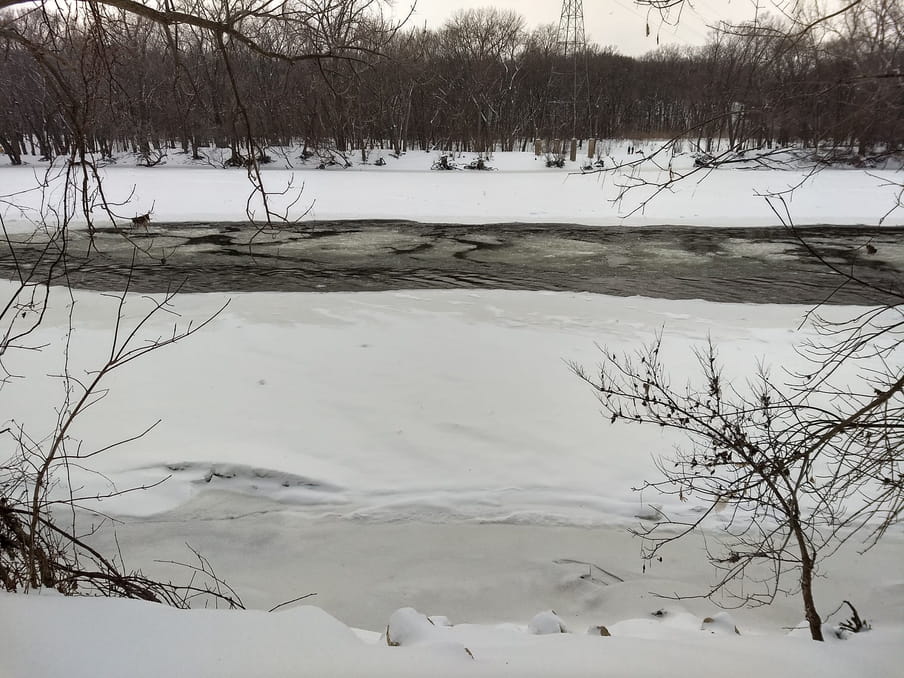Hi,
In the northern hemisphere, chances are this week will be the coldest week of the entire year. If you’re like me, that means you’re already looking for signs of spring.
To celebrate the imminent return of warmth, I went out last weekend along the banks of the Mississippi river here in St Paul, Minnesota, and found it completely frozen over.

The sight of such a powerful body of water seemingly immobilised by the cold was awe-inspiring. The Mississippi river is one of the world’s longest rivers and drains about one-third of the continental United States, but this weekend all that power was hidden underneath a thin shell of ice.
There’s a roughly 40-day lag between the day of least sunlight (the winter solstice, in late December) and the typically coldest day of the year (usually around late January, depending on your local microclimate). This lag exists because the oceans cover 70% of the planet and act as a giant heat battery, leaking warmth from the summer into the autumn and winter months, easing the onset of spring and summer as they gradually warm up again. This is the same cycle that has been going on naturally for billions of years, until we started adding greenhouse gases to the atmosphere.
There’s a similar lag between humanity’s greenhouse gas emissions in any given year and the peak warming effect those emissions have on the planet. But the climate warming lag is 40 years, approximately the time it takes for the top layers of the ocean to circulate. The oceans absorb about 90% of the heat energy, and 2019 was the oceans’ warmest year ever measured. That heat is being added to the climate system so quickly it’s being stored in the deep oceans, so that even if we rapidly phase out all greenhouse gas emissions, the oceans will continue to release that stored-up heat for decades to come. This is not a reason for hopelessness; it’s a reason to understand just how important our present moment is.
As I walked further, I noticed a spot where the ice hadn’t completely frozen. I realised that hidden just beneath the surface of the vast frozen river was a rushing torrent of water, eternally moving toward the sea. There is no way to stop a river this strong.

This time in history – mid-winter, the final few years before our rapid transformation to a justice-centred, carbon-neutral world – can feel like a time of unbearable waiting. But the change is all around us, just beneath the surface.
 Subscribe to my newsletter
Would you like to receive my newsletter in your inbox? Follow my weekly newsletter for an insight into the work, thoughts and ideas that go into being a Climate correspondent.
Subscribe to my newsletter
Would you like to receive my newsletter in your inbox? Follow my weekly newsletter for an insight into the work, thoughts and ideas that go into being a Climate correspondent.

